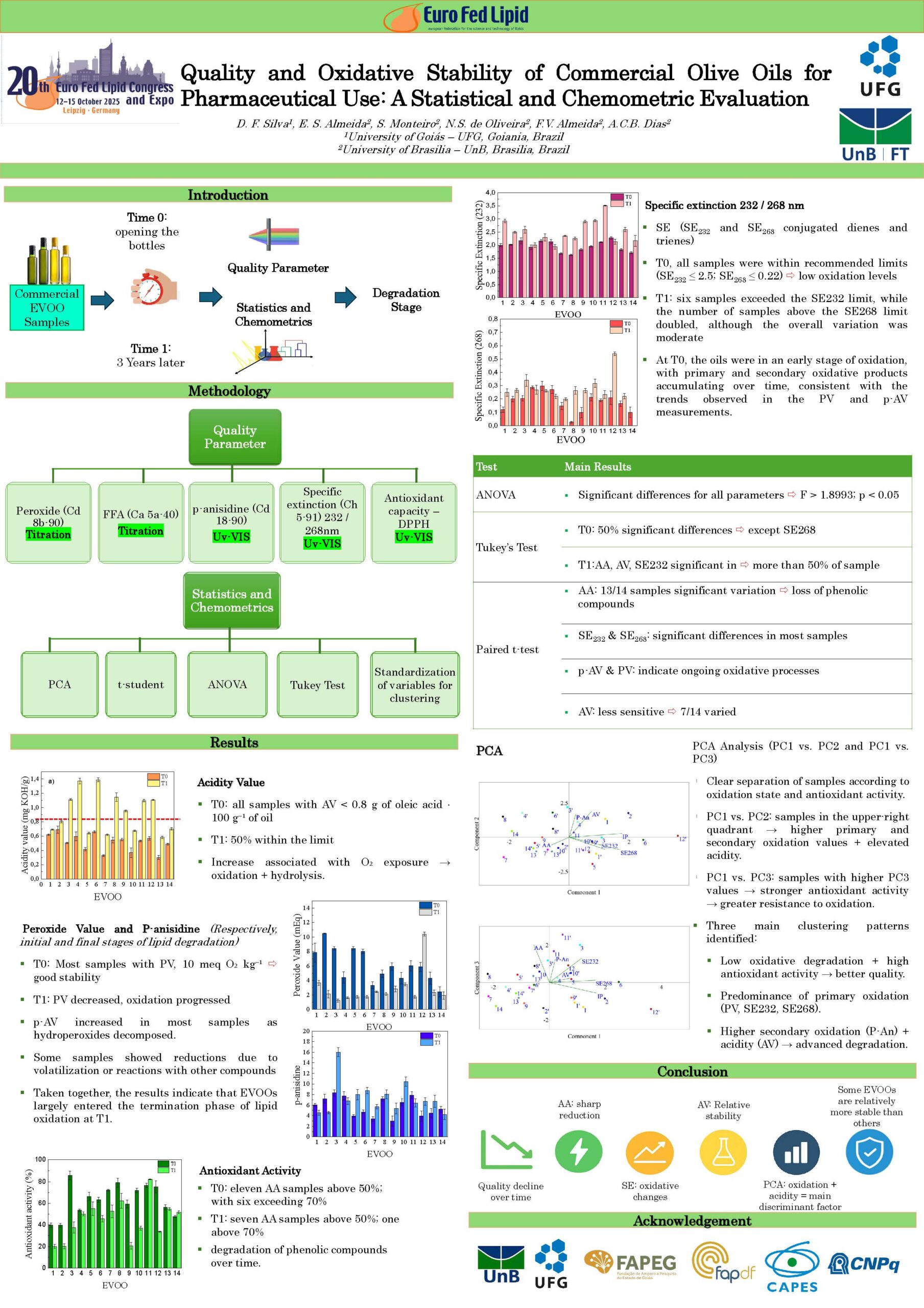The natural degradation of fatty acids in olive oil, even in the presence of inherent antioxidants such as phenolic compounds and tocopherols, poses a significant concern, particularly when the oil is used as an excipient for biocompounds, vitamins, and medicines. This process, accelerated by factors like light, heat, and atmospheric oxygen, involves hydrolysis and oxidation reactions that manifest as detrimental changes in flavor, color, and aroma. More critically, this degradation can compromise the efficiency and stability of solubilized medicines.
In this study, the oxidation process of 14 commercial olive oil samples was studied over a three-year period. The time zero for this evaluation was when the olive oil bottles were first opened. Key degradation indicators assessed included peroxide value, p-anisidine value, Acidity Index, Antioxidant Activity, and Specific Extinction Coefficients at 232 nm and 268 nm. ANOVA of the time-zero results demonstrated significant differences among all samples. Subsequent paired Student’s t-tests revealed statistically significant degradation (p ≤ 0.05) in most samples over the three-year period, most notably in their reduced antioxidant activity and elevated specific extinction at 232 nm. Principal Component Analysis (PCA) effectively clustered the samples into three distinct patterns, directly correlating with their respective degradation or preservation states. These results highlight the substantial impact of oxidative changes on olive oil’s quality over the studied time and emphasize the necessity of accounting for these changes to ensure the long-term effectiveness of medicines drug and vitamin formulations.
